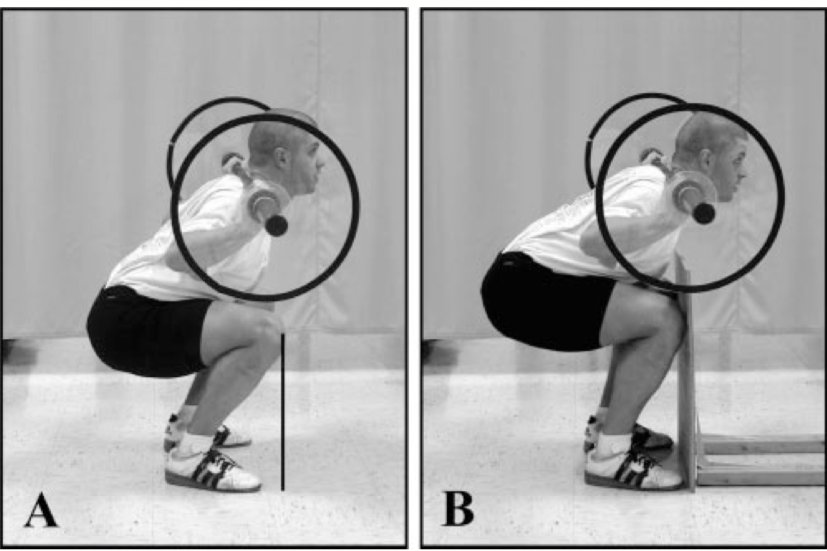10 Most Popular Squat Mistakes
2019-03-3
We get excited to offer our DVRT community new opportunities to understand what functional fitness is all about. The most difficult thing today isn’t getting training information, or exercises. It is having a filter to know what is good information and what is simply not. I’m not suggesting every idea we have had over the past 20 plus years have been gems, however, those mistakes have allowed us to really create something special when it comes in giving science based and practical training information.
A great example is the new 2 series of our L.I.F.T. program (loaded integrated functional training program) squatting and upper body pulling movements. Squat training is something that people know is good for them, but can struggle in either successfully implementing without aches/pain, or feeling they hit stagnation where they don’t know where to take the movement.
What is one to do and where do people go wrong with the squat? I thought it would be easiest to pull out my wanna be David Letterman and give you a top 10 list of where people go wrong in their squat workouts.

1. It Isn’t Knees or Hips
Yea, we are going backwards in our top 10 and starting with the MOST important part of building your squat. That’s largely because we need to build everything from the most important concepts out!
When I got into the fitness industry, I was taught to start any squat with bending the knees and pushing the hips back. That is pretty much most personal training 101, but it is WRONG!
Everything must start with us grabbing the ground and creating tension from the ground up. This helps set the knees in place and activates the glutes. Using the glutes from the start helps us create stability for better movement.
2. Knees Go Out
One of those horrible cues I learned at the beginning of my career was the super vague one of “push the knees forward”. If you tell people to push their knees forward during the squat they get “stuck” in their hips and can only go so far in their knees. This causes two major problems. The first is that people put a lot of unnecessary stress on their knees and this is one of the first reasons that people hate to squat.
When we push our knees forward we also cause the hips to flex forward because the head of the femur can only move so far in the hip joint for many people. Instead of forward, the knees go out as we grab the ground. This opens the pelvis and takes stress off the knees. People feel stronger and find better range of motion in their squat.
3. Feet Turn Out
In college I had a friend from India. He was slight in build and was able to put his feet together and squat all the way up and down without any issues. Watching him made my whole body hurt, but he did it pain free. Why do I tell you this story?
There are some organizations that say people should be able to squat with the feet straight ahead. The reality is we don’t know each person’s anatomy when they come to train. The majority can not squat with their feet straight ahead whether due to mobility or structural reasons. However, everyone can accomplish a good squat with their feet turned slightly out. This makes it easer to use the feet, engage the glutes, and open the pelvis as we squat.
4. Your Knees May Move Forward
Personal training 101 usually tells you that if you knees move forward to your toes, your knees will explode. Okay, I’m exaggerating, however people are told it is very bad for the knees. Most that are told this don’t know why, and we never challenge if this is really the case.
Research has actually shown that when your knees go forward during a squat y0u do have a rise in stress of the knees. Is that stress bad for you? Compared to NOT letting the knees travel forward, we see the stress in the knees is not only very tolerable, but way less than what is then caused in the hip and lumbar spine. Those loads exceed very high levels so allowing the knees to move forward (assuming the feet are being used) actually is okay on your knees and saves your back!

5. Knees Caving In Isn’t Your Glutes, Well Not Totally
When coaches see knees caving in you will see the bands being drawn out of hiding. I’m not against using bands around the knees, but many people try this strategy in fixing the squat, but when they take the band off they find it didn’t work. Why? Isn’t it about the glutes?
Partly, but another part of your body actually controls your knees and hips, that is your feet! Unless we properly cue the feet we will never actually help the knees and maximally use the glutes.
6. Squats Are A Full Body Exercise
It would make sense to have people only think of the squat a leg exercise, however, that isn’t the case and where many people get stuck in helping build a great squat. If we watch powerlifters get under the barbell to squat you see they create a lot of tension in the upper body that utilizes the lats and core.
Why?
Lats and core share a big connection with the glutes as well stabilizing the pelvis allows the legs to create more force. That means we want the core and upper body to be appropriately active as well to create better squats.
7. Weight Should Go On Your Back
Putting weight on our upper back makes sense at first glance. We see pictures from almost 100 years ago of lifters doing so. The back is the most stable position we can hold the weight and that also allows us to lift the MOST amount of weight.
What you don’t realize from those old pictures is that most barbells, at first, were not very heavy or large. Most lifters also had a background in wrestling and gymnastics so their base of strength, movement, and mobility is very different than we see today.
Nowadays we see a lot of low back issues and that has led researchers to see if back squats are the best. The research has shown that we can actually train the muscles of the lower body JUST as well with the weight in front without the stress the weight on the back causes on the low back or knees. Pretty cool huh?
8. How We Hold Weight In Front Makes All The Difference
With the knowledge that weight in front of the body vs on the back can help us get strong and be injury resilient, we then want to think about, “does it matter how we hold the weight?” Most people don’t think about it, but the answer is a resounding YES!
When we create tension against the weight we create bracing through our core and connection of the lats/core to help the pelvis and lower body. The different strategies in which we can hold the weight allow us to build better movement of the squat and strength at the same time.
9. Butt Wink Is Caused By……
There are no shortage of blogs devoted to explaining what causes butt wink. That is when your tail tucks under when you squat. The reality is that it is quite simple. The greater the core tension, the better we can control our pelvis and we don’t have the butt wink. So, how do we accomplish this during the squat?
The feet and how we create tension against the load are really the answer. While these are simple concepts, they aren’t easy to maintain as you fatigue and build into more sophisticated forms of the squat. However, the feet and the tension of the weight are concepts we will keep going back to time and time again.
10. The Best Squat Is Bilateral
The biggest mistake of much of the understanding of any movement is that load is not equal. Just because we see a large weight, doesn’t mean we get better fitness results. In our comparison of the front and back squat, the researchers found that over 40 pounds less load in the front squat created the same results in the lower body as the heavier backs squat.
More interesting is the fact research has shown single leg based movements actually can stimulate MORE muscles. That is due to our bodies needing to both produce and resist force at the same time. Understanding this will allow us to tap into more functional fitness qualities than most even realize! The two legged squat is just the START to our squatting journey.
Hopefully this top 10 list made you think about how we teach, program, and implement the squat differently. Success in the squat shouldn’t be painful, or limited. What we wanted to accomplish in L.I.F.T. was not to just help clear up these myths, but give you a system of better training and performance.
Save over $70 on our first 5 modules and get a FREE Ultimate Sandbag, Lever Bell, and Mini Bands when you use coupon code “lift20” HERE or save 25% on our Squatting and Pulling Modules with coupon code “strong25” and get a FREE Ultimate Sandbag HERE
© 2025 Ultimate Sandbag Training. Site by Jennifer Web Design.







